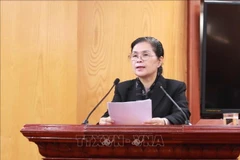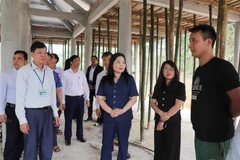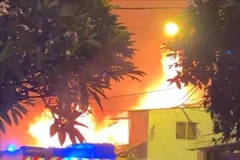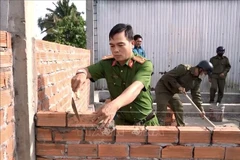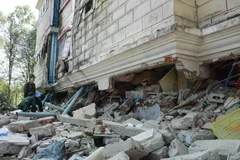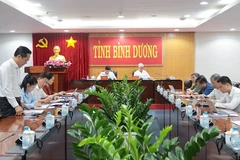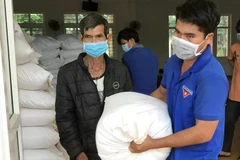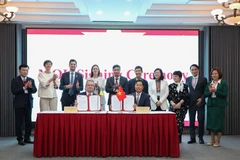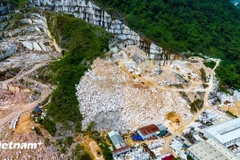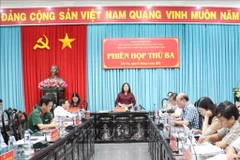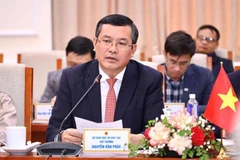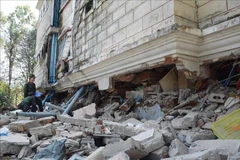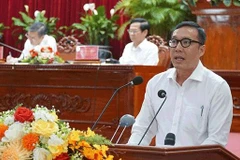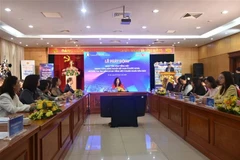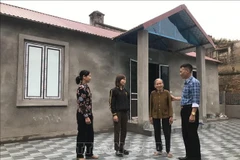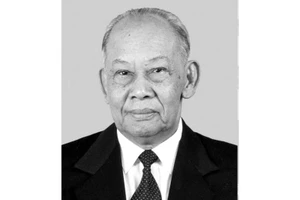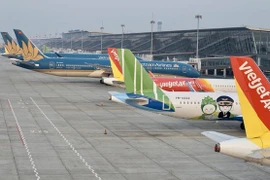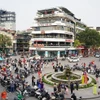Minister of Industry andTrade Vu Huy Hoang when addressing an online conference reviewing 15years of rural electrification on April 26 said “Vietnam’s ruralelectrification has significantly grown over the last 15 years.”
Only2.5 percent of households used electricity in 1975 while its figureincreased to more than 98 percent in 2013. In particular, nearly 97percent of rural households used electricity.
The power grid hasbeen strongly invested and renovated. As a matter of fact, it hashelped changing the appearances of rural and remote areas, creatingfavourable conditions for the development of agricultural production,processing industry and agricultural services. Agricultural productionindex increased by 6.6 times in the 1998-2013 period and averageindividual income increased by 8 times in the same period.
Therural electrification programme has been strongly developed. Togetherwith investment capital from the state budget, donors have also activelycontributed to bringing power to remote areas and improving the qualityof rural low-tension power grid.
According to incompletestatistics, a total investment capital for the development andimprovement of the rural power grid in the last 15 years reached 48.291trillion VND. In particular, Red River Delta and north central coastprovinces (excluding Hanoi) invested 17.169 trillion VND, followed bynorthern mountainous provinces, central provinces, Mekong Deltaprovinces, southeastern provinces, Hanoi and Ho Chi Minh City.
Withthe goal of bringing power to provinces in the Central Highlands, thePrime Minister asked the Electricity of Vietnam (EVN) to implement the1.3 trillion VND project on bringing power to remote villages in theCentral Highlands in the 2006-2009 period. The EVN also implemented anumber of projects such as bringing power to households in Kien Giang,Bac Lieu, Son La, Bac Kan and Lai Chau provinces.
Together withthe goal of ensuring security and safety for islands and seas, a seriesof undersea power cable projects are being implemented to bring power toCo To Island, Phu Quoc Island and Ly Son Island.
Deputy PrimeMinister Hoang Trung Hai said that the rural electrification programmehas contributed 30-40 percent to socioeconomic development in ruralareas, creating favourable conditions to change the structure of therural economy and improve people’s living conditions.
However,Deputy Prime Minister Hoang Trung Hai also said that challenges for theelectricity sector in the implementation of the rural electrificationprogramme in the time to come remain huge. As many as 91 communesthroughout the country have not yet get access to electricity. With thegoals of 98 percent and 100 percent of rural households havingelectricity by 2015 and 2020 respectively, the electricity sector needsto make greater efforts. In the near future, ministries, departments andlocal governments need to meet their objectives. In particular, a focuson ensuring technical conditions and improving quality of the ruralpower grid is needed.
To fulfill these objectives, Vietnam hasurged international partners to take part in these projects in terms ofcapital, technology and management work.
The World Bank hasclosely cooperated with the Vietnamese government and EVN since 1995 andprovided more than 4 billion USD in loans for power projects. In the1998-2013 period, the World Bank funded about 12 projects related to thedevelopment of rural electrification with a total investment capital ofmore than 2 billion USD.
World Bank’s Country Director forVietnam Victoria Kwakwa said that Vietnam's rural electrificationprogramme was one of their most sucessful projects in Vietnam.-VNA
